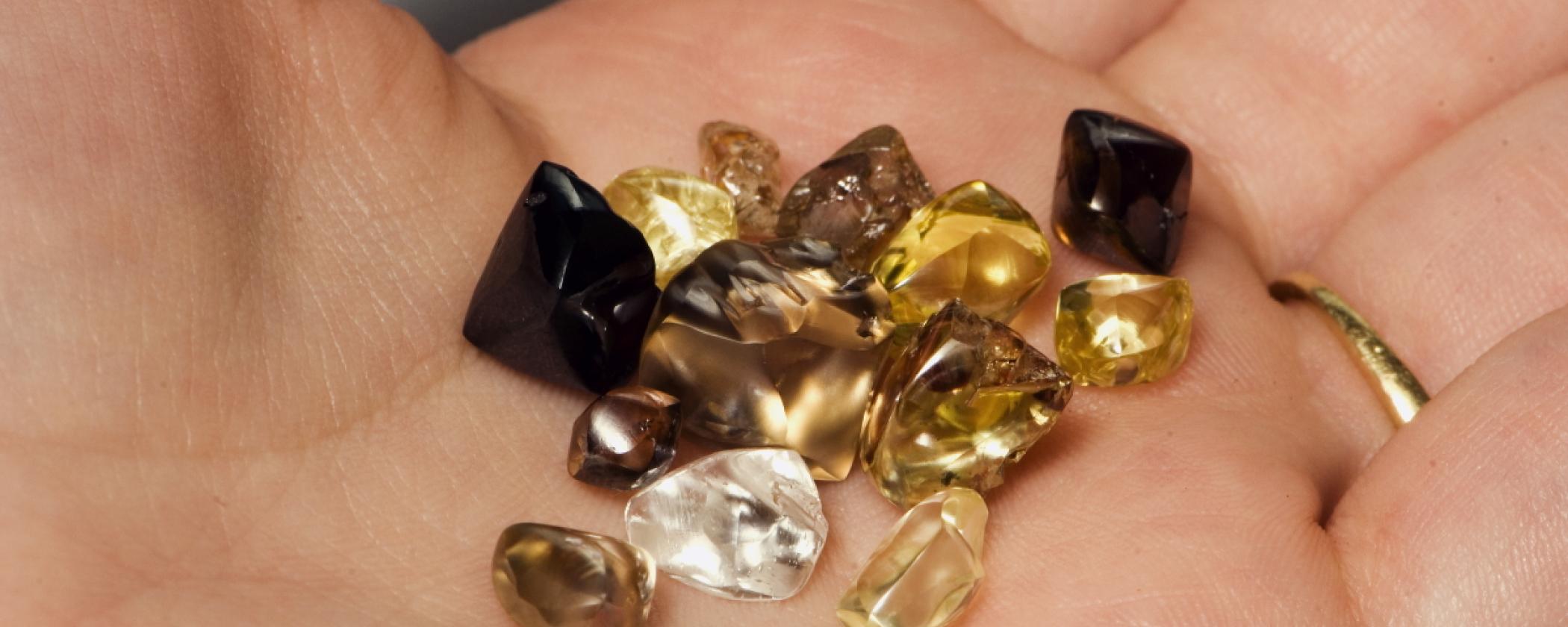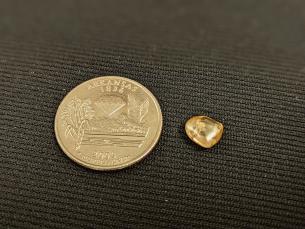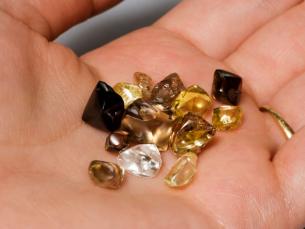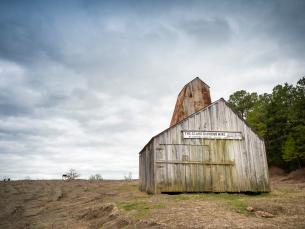
The Shape of Crater Diamonds
By: Emma O'NealGreetings from Crater of Diamonds State Park! Most guests aren’t sure what to look for in a diamond the first time they visit the park. Learning to recognize uncut diamonds is the first step to a successful search.
The majority of diamonds unearthed at the Crater of Diamonds have a smooth surface due to high resorption, making them appear more rounded than other natural diamonds. Resorption is the dissolving of a diamond by magma during movement toward earth’s surface. The speed at which magma erupted here created tremendous heat, triggering a chemical reaction that began dissolving the diamonds it contained, so much so that most diamonds are believed to have disappeared completely. This also explains why the park’s crater yields mostly smaller—and fewer—diamonds than commercially viable diamond mines. Though resorption rounded the edges of all Crater diamonds, some larger diamonds may still have visible trigons (triangular etch pits formed early in the resorption process) due to partial shielding by the surrounding host rock.
Due to resorption, most Crater diamonds are modified from octahedrons (eight-sided crystals) to either dodecahedrons (12-sided) or tetrahexahedrons (24-sided). Another interesting diamond shape occasionally found at the park is called macle, a flattened, triangular gem formed when two diamonds share part of the same crystal lattice during formation.
Most diamonds found at Crater of Diamonds State Park weigh around one-quarter of a carat. That’s about the size of a matchhead. An average of 15 diamonds found each year weigh more than one carat; of these, only four or five usually weigh two carats or more.
Thousands of people visit the Crater of Diamonds every year in search of diamonds. Diamonds are rarer here than in most commercial mines, making the challenge of finding one greater and the reward much sweeter. When you find a diamond here, you’re likely the first person to have ever held it. Since most commercial mines don’t allow individuals to search, the adventure and opportunity for discovery are as much a reward as the gem itself. Come visit us and see if you can find your Crater of Diamonds gem!



